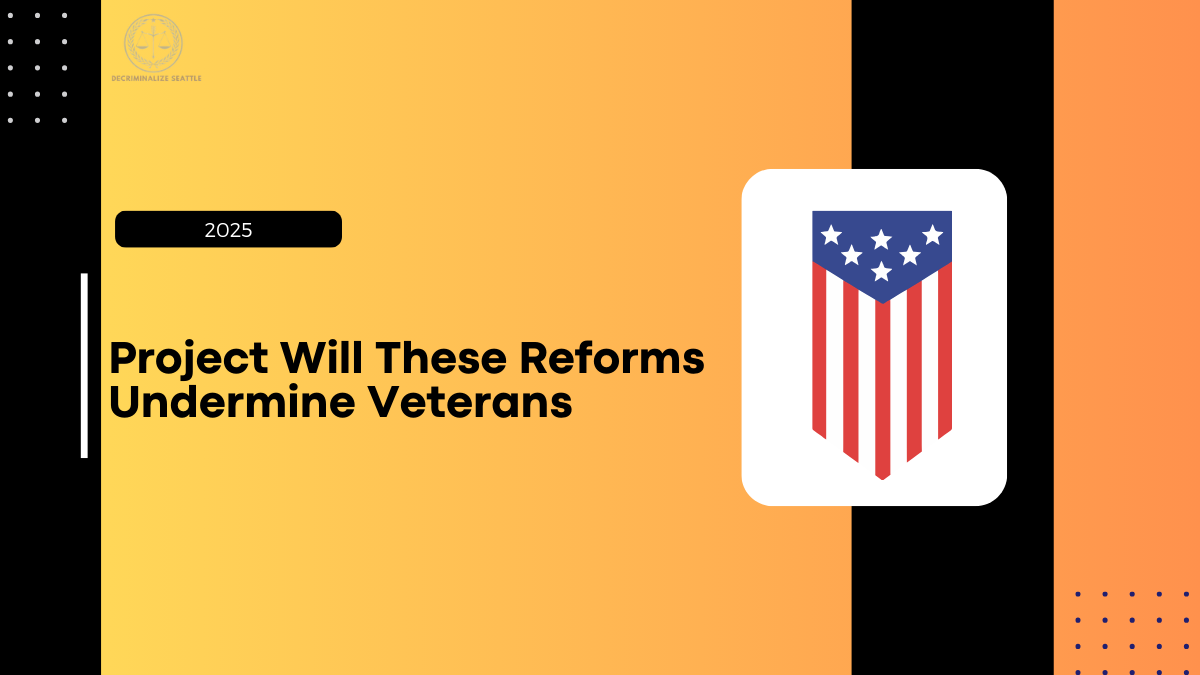Project 2025, initiated by The Heritage Foundation, is a conservative-driven policy proposal aimed at reshaping the structure and operations of various federal agencies, including the Department of Veterans Affairs (VA). While the initiative presents some benefits in terms of privatization and increased efficiency, it has also drawn significant criticism, particularly from veterans’ advocacy groups.
Critics argue that the proposed changes could negatively impact the benefits and support systems that veterans rely on, potentially disrupting their access to healthcare and reducing the scope of benefits.

Project 2025 Exposed
Project 2025 is a policy proposal designed by The Heritage Foundation, a conservative think tank based in the United States, with the aim of reforming multiple federal agencies to reflect conservative values of smaller government, reduced spending, and privatization.
This initiative targets a variety of agencies, but a major focus is the Department of Veterans Affairs (VA). The Heritage Foundation advocates for a transition towards a more privatized model of healthcare, arguing that such reforms would streamline services, cut costs, and improve efficiency.
The proposal also recommends tightening the eligibility criteria for veterans’ benefits and shifting employment practices within the VA to prioritize politically appointed personnel over long-serving career civil servants. According to the Foundation, these changes are necessary to address the VA’s current challenges, which include an aging veteran population, rising healthcare costs, and inefficiencies in service delivery.
However, these recommendations have been met with widespread concern from veterans and their advocates, who argue that the reforms could undermine the very foundation of support services provided to veterans.
Benefits of Project 2025
While controversial, Project 2025 does present several potential benefits, particularly in terms of efficiency and cost savings. Below are some of the proposed advantages:
1. Increased Efficiency Through Privatization
The proposal suggests that incorporating more private sector involvement could reduce the VA’s operational burden, allowing for more specialized healthcare options. Privatization, proponents argue, could lead to quicker service delivery, especially for veterans living in rural or underserved areas. By outsourcing some of the services to private entities, the VA would potentially be able to focus on improving core functions and reducing wait times for veterans seeking urgent care.
2. Cost Containment and Budget Control
With the VA’s budget exceeding $240 billion as of 2021, healthcare costs have become a significant concern. Project 2025 aims to control these rising expenses by streamlining services and introducing stricter criteria for benefit eligibility. This would, in theory, reduce the financial strain on the system, ensuring its long-term sustainability and preserving funds for those deemed most in need.
3. Enhanced Quality of Services
By introducing competitive practices from the private sector, Project 2025 hopes to enhance service quality and patient satisfaction. A 2018 report by the VA indicated varying levels of patient satisfaction across different facilities, suggesting room for improvement. Competitive elements could motivate the VA to elevate its service standards, resulting in a higher quality of care.
Drawbacks of Project 2025
Despite its intended benefits, Project 2025 carries several drawbacks that could disrupt veterans’ access to essential services and undermine their well-being.
1. Risk of Fragmented Healthcare
A key concern is the potential fragmentation of healthcare services. A 2022 study by the RAND Corporation found that veterans using Community Care services faced issues with care coordination, leading to inconsistent treatment plans and duplicative testing. Expanding privatization could worsen these issues, creating a disjointed system where veterans might receive conflicting or incomplete care.
2. Reduced Access to Benefits
Currently, approximately 4.7 million veterans receive disability benefits through the VA. By tightening the eligibility criteria, Project 2025 could significantly reduce this number, affecting the financial security and healthcare access of many veterans. The proposed changes could result in fewer veterans qualifying for benefits, leaving vulnerable individuals without the support they were promised.
3. Negative Impact on VA Workforce and Morale
The VA employs over 377,000 staff members, many of whom are specialized civil servants dedicated to serving veterans. Project 2025’s plan to replace career civil servants with politically appointed personnel could disrupt the stability and morale of the workforce, potentially leading to a loss of institutional knowledge and a decrease in service quality.
Verifying Project 2025’s Proposals on Veterans’ Benefits
Project 2025 includes specific proposals that could have far-reaching impacts on veterans’ benefits. These include:
- Stricter Eligibility Criteria: By redefining what constitutes a service-connected condition, the initiative could disqualify certain conditions that are currently covered, reducing the number of veterans eligible for benefits.
- Revised Disability Ratings: The proposal suggests accelerating the disability rating process and enforcing stricter standards, which could result in a lower level of benefits for future claimants.
- Veterans Bill of Rights: This proposal aims to enhance transparency by better informing veterans about their rights and the benefits process, including access to Community Care services. While this could be beneficial in theory, the stricter criteria may limit access for some veterans.
Impact on Current VA Disability Benefits
Although Project 2025 does not explicitly call for cutting existing benefits, it proposes re-evaluating certain conditions and potentially narrowing the range of benefits available. This means that veterans currently receiving benefits may experience reductions based on the outcome of these re-assessments. In practice, this could mean that some veterans, while not losing all their benefits, might see a decrease in the financial support they receive or face increased hurdles in proving their eligibility.
Conclusion
Project 2025 has sparked significant debate due to its potential to reshape the VA and veterans’ benefits. While proponents argue that these reforms are necessary for efficiency and long-term sustainability, critics believe that the initiative could harm the very group it aims to support by reducing benefits, creating fragmented care systems, and disrupting the stability of the VA workforce. As discussions continue, it remains crucial to weigh the proposed benefits against the possible drawbacks to ensure that veterans receive the support and services they deserve.
Click here to know more.